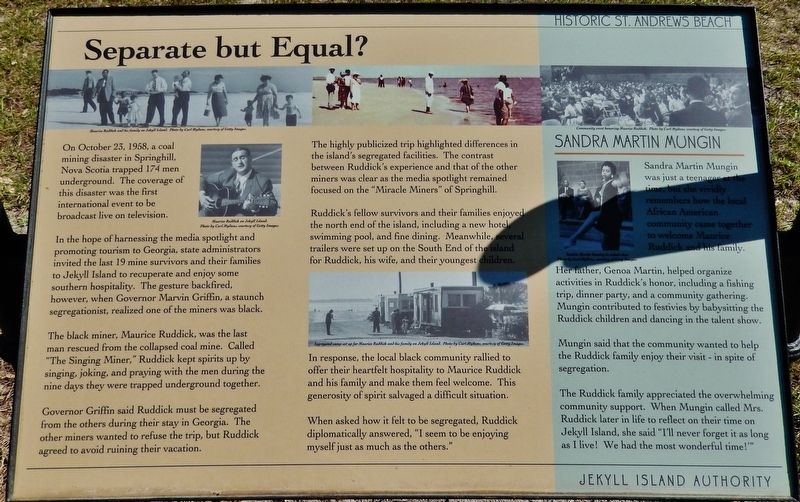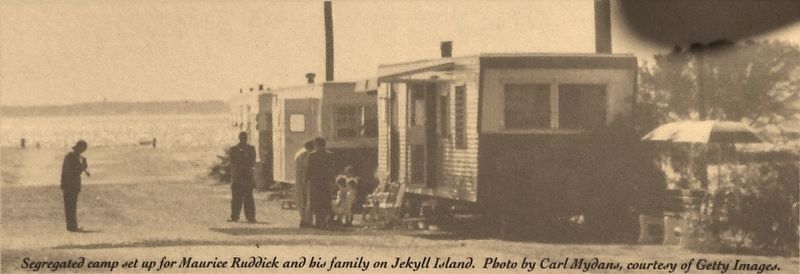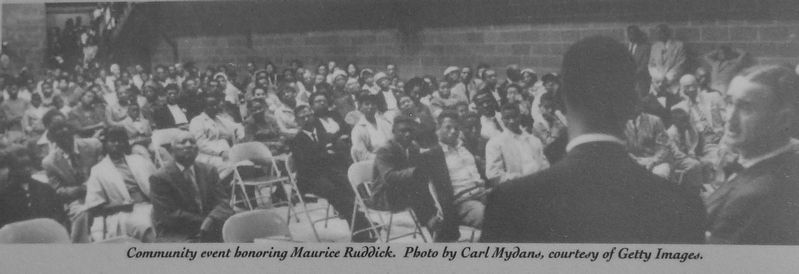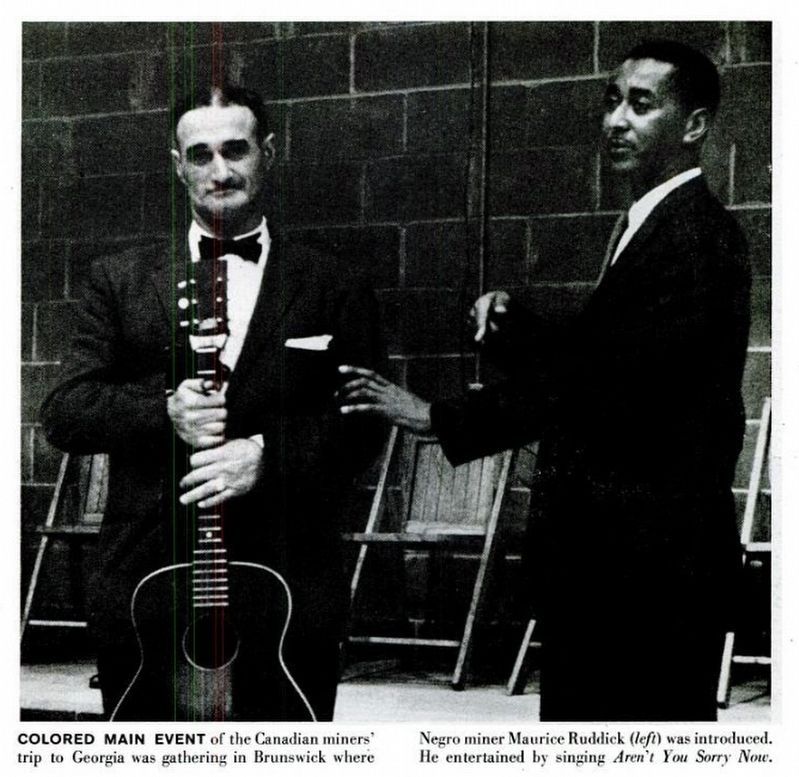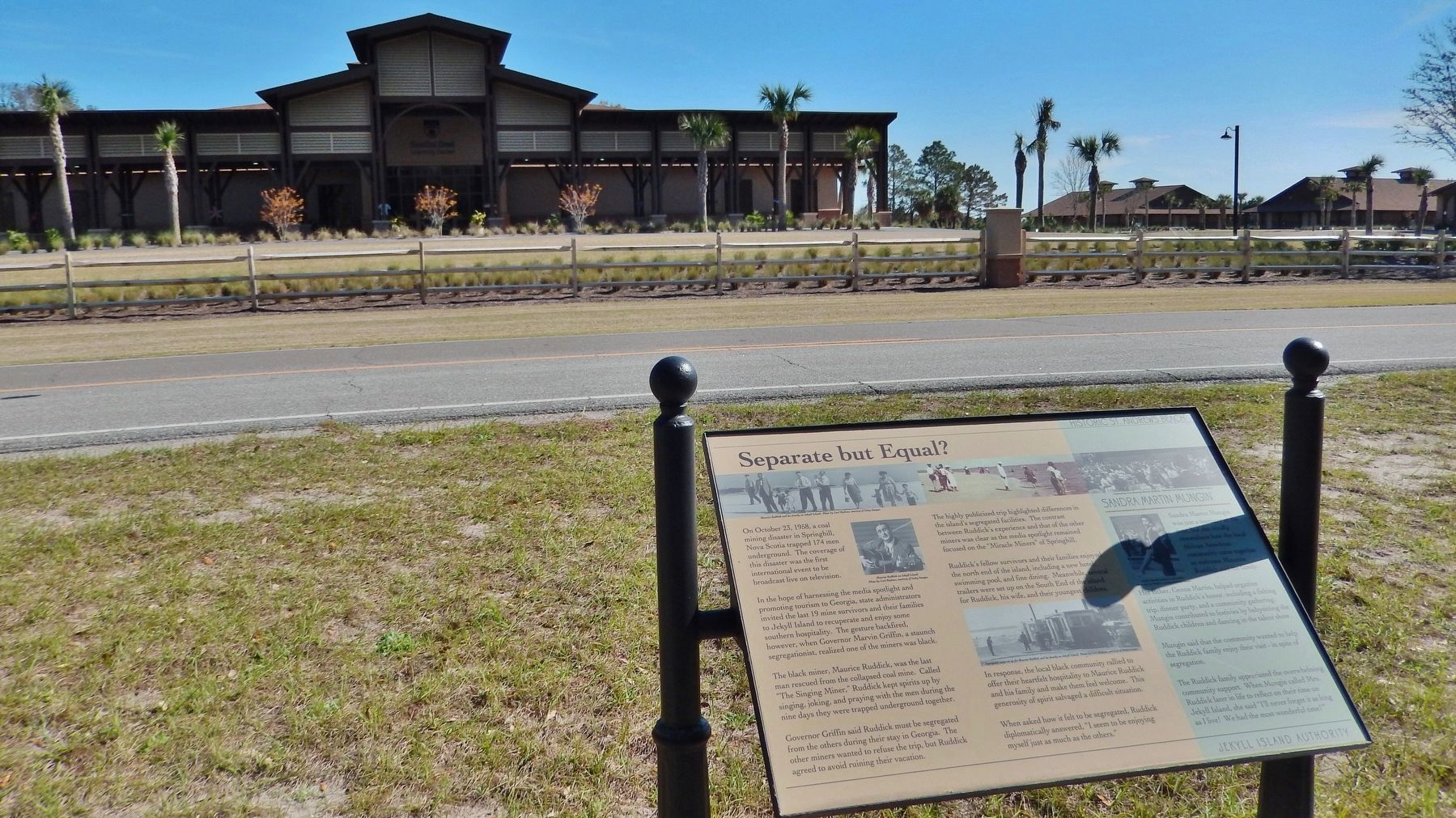Jekyll Island in Glynn County, Georgia — The American South (South Atlantic)
Separate But Equal?
Historic St. Andrews Beach
In the hope of harnessing the media spotlight and promoting tourism to Georgia, state administrators invited the last 19 mine survivors and their families to Jekyll Island to recuperate and enjoy some southern hospitality. The gesture backfired, however, when Governor Marvin Griffin, a staunch segregationist, realized one of the miners was black.
The black miner, Maurice Ruddick, was the last man rescued from the collapsed coal mine. Called "The Singing Miner," Ruddick kept spirits up by singing, joking, and praying with the men during the nine days they were trapped underground together.
Governor Griffin said Ruddick must be segregated from the others during their stay in Georgia. The other miners wanted to refuse the trip, but Ruddick agreed to avoid ruining their vacation.
The highly publicized trip highlighted differences in the island's segregated facilities. The contrast between Ruddick's experience and that of the other miners was clear as the media spotlight remained focused on the "Miracle Miners" of Springhill.
Ruddick's fellow survivors and their families enjoyed the north end of the island, including a new hotel, swimming pool, and fine dining. Meanwhile several trailers were set up on the South End of the island for Ruddick, his wife, and their youngest children.
In response, the local black community rallied to offer their heartfelt hospitality to Maurice Ruddick and his family and make them feel welcome. This generosity of spirit salvaged a difficult situation.
When asked how it felt to be segregated, Ruddick diplomatically answered, "I seem to be enjoying myself just as much as the others."
(sidebar)
Sandra Martin Mungin
Sandra Martin Mungin was just a teenager at the time, but she vividly remembers how the local African American Community came together to welcome Maurice Ruddick and his family.
Her father, Genoa Martin, helped organize activities in Ruddick's honor, including a fishing trip, dinner party, and a community gathering. Mungin contributed to festivities by babysitting the Ruddick children and dancing in the talent show.
Mungin said that the community wanted to help the Ruddick family enjoy their visit – in spite of segregation.
The Ruddick family appreciated the overwhelming community support. When Mungin called Mrs. Ruddick later in life to reflect on their time on Jekyll Island, she said "I'll never forget it as long as I live! We had the most wonderful time!"
Erected 2016 by Jekyll Island Authority.
Topics. This historical marker is listed in these topic lists: African Americans • Civil Rights • Communications • Disasters • Parks & Recreational Areas. A significant historical date for this entry is October 23, 1958.
Location. 31° 1.1′ N, 81° 25.591′ W. Marker is on Jekyll Island, Georgia, in Glynn County. Marker is on South Beachview Drive, 2.3 miles south of Jekyll Island Causeway (Route 520), on the right when traveling south. Marker is located directly across the highway from Camp Jekyll. Touch for map. Marker is at or near this postal address: 550 South Beachview Drive, Jekyll Island GA 31527, United States of America. Touch for directions.
Other nearby markers. At least 8 other markers are within walking distance of this marker. St. Andrews Beach (within shouting distance of this marker); The Dolphin Club Lounge (about 400 feet away, measured in a direct line); The Beach Pavilion (about 500 feet away); The Dolphin Motor Hotel (about 500 feet away); Beach Access (about 700 feet away); The Wanderer — Arrival (approx. half a mile away); The Wanderer — Built For Speed (approx. half a mile away); The Wanderer — Timeline: Continued (approx. half a mile away). Touch for a list and map of all markers in Jekyll Island.
Related markers. Click here for a list of markers that are related to this marker. Historic St. Andrews Beach
Also see . . .
1. Maurice Ruddick.
Ruddick was among 174 men in the No. 2 colliery when a bump — a buckling of the mine’s walls and ceilings — caused the shaft to collapse. Seventy-five men died in the disaster. The remainder were trapped underground. Ruddick and six other men were trapped near the bottom of the mine. In an effort to sustain his team’s morale in the darkness and stifling heat of the shaft, and despite the pain of his broken leg, Ruddick led his fellow workers in a few tunes. Georgia Governor Marvin Griffin invited the surviving men and their wives to a resort on Jekyll Island. But insisted that Ruddick be segregated from the group. Ruddick and his wife Norma chose to accept the governor’s half-hearted invitation. “This might be a chance to open some people’s eyes,” said Ruddick. (Submitted on March 17, 2018, by Cosmos Mariner of Cape Canaveral, Florida.)
2. Miracle at Springhill, by Leonard Lerner.
Link to a 1960 book about Maurice Ruddick and the Springhill Mine Disaster. (Submitted on March 17, 2018, by Cosmos Mariner of Cape Canaveral, Florida.)
3. Maurice Ruddick.
(Link to 1993 video)
An Afro-Canadian coal miner describes how he and his fellow workers survived eight days trapped underground during the 1958 mining disaster in Springhill, Nova Scotia. (Submitted on March 17, 2018, by Cosmos Mariner of Cape Canaveral, Florida.)
4. The Dubliners Sing “Springhill Mine Disaster”. Composed by Peggy Seeger and Ewan MacColl.
Additional keywords. segregation, Jim Crow era
Credits. This page was last revised on May 5, 2020. It was originally submitted on March 17, 2018, by Cosmos Mariner of Cape Canaveral, Florida. This page has been viewed 1,121 times since then and 55 times this year. It was the Marker of the Week October 21, 2018. Photos: 1, 2, 3, 4, 5. submitted on March 17, 2018, by Cosmos Mariner of Cape Canaveral, Florida. • Bill Pfingsten was the editor who published this page.
